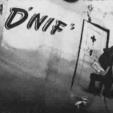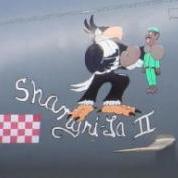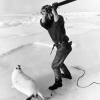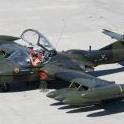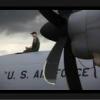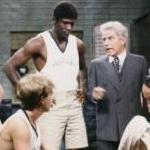Leaderboard
Popular Content
Showing content with the highest reputation on 05/08/2020 in all areas
-
Formation landings and takeoffs have always been considered a risk with pilots being against them as long as I’ve been in fighters. The Vance incident was just the perfect example of why. TRs are written in blood. It shouldn’t have to be a daily occurrence before it’s addressed. Risk in our world has to be accepted for a purpose. There is no benefit in a form landing or takeoff to justify acceptIng the risks. I don’t want to be near someone if I lose an engine, have to punch off my stores, or punch out.2 points
-
That makes the most sense. Still need basic skill of flying close and doing tasks while close (radio changes, gear down, etc.), but there’s almost zero need for a form landing, and the increased risk of doing them so a student is “ready” for that 1 in a million chance in the CAF is not worth it.2 points
-
Address what? How to teach the crew concept to T-38 grads? I don’t think it’s a big deal really. I was one. My initial qual partner was also a T-38 grad (there were quite a few of us a decade ago...thanks Gen Lorenz and your “universally assignable” policy). Yes, it took a few whacks across the knuckles or a jab to the back of the shoulder from the sim IP with his pointer stick the first couple of sims, but we had it figured out pretty well after doing a few of them. It’s not a very difficult transition when coming from flying a fast jet where you have to think miles ahead of the aircraft, to a slower one where you share cockpit duties with another pilot. And that’s not intended to be a jab at the T-1 grads; most of them were pretty good pilots in my community. Also, T-38s have sent guys to bombers for decades...their FTUs are more than well adapted to teaching the crew concept to a bunch of fighter pilot wannabes.2 points
-
Form landings have officially been removed from the T-6/T-38 syllabi in UPT now. Still practice form approaches though.2 points
-
I'm still perplexed as to why people suddenly believe that formation landings are this massive risk. Compared to the number of times they are performed (with regularity) incident-free (also with regularity, even with student pilots at the helm), the rate of incident/accident is phenomenally low. By definition, based on that data, they're not "risky". Yes, there is a small margin of error (just like a vast many things in high performance military aviation), and the consequences of some modes of error can be severe and/or fatal (just like that same vast number of things in high performance military aviation)...so what makes formation landing now some kind of exception?1 point
-
All things Equal the manned platform will be preferred over unmanned. Yes *insert call sign here* was padlocked to just go look at something not even in the city limits of Raqqa repeatedly and not just by one task force JTAC. Yes, I’ve watched 9 lines punted from one asset to another because dudes training didn’t get it done or because they weren’t responsive enough to the dynamic nature of the target. Drones weren’t the primary VBIED killer over Mosul, the Apaches flying at Block 7-9 under them were. Or did they just imagine the 1100 Hellfires we shot into that city. You guys asked the open ended question of “does the ground force care” without actually living/knowing the ground force and you seem to have definitive answers to speak for those guys. Or you don’t buy it when somebody gives you their take. Which one of us probably has the answer and backstory as to why they feel the way they do about it. It’s not hard to know how they feel about drones vs manned aircraft and why they prefer one over the other when you actually spend time with the dude who to the rest of the stack is a callsign and suffix. Sent from my iPhone using Tapatalk1 point
-
Depends on the RW CAS you are comparing. An Apache is going to be different than a Huey. Probably, could be somewhat similar though, as airspeeds are likely to be somewhat similar (at least if you take a slower fixed wing). That said, some helicopter tactics aren't going to be available unless you have STOL capability and a headwind.1 point
-
I don't find any truth to this statement. It might be anecdotal but I've never seen an aircraft removed to the penalty box although I have heard rumors of it. Every aircraft has bad players though. Off my head, I can think of an F-16 that busted altitude and almost killed me, a B-52 that couldn't take an LSST after 40 minutes, and an F-15E two ship that struck the wrong building. Yes, RPAs have had problems as well. I remember getting a phone call about a guard MQ-1 that was fucking comm flow left and right. But most of the time these are training issues and have nothing to do with the platform. Your arguments sound like stuff you hear from your buddies or things that may have came out of the Enterprise 9-10 years ago when the community was expereincing growing pains. However, having seen the metrics out of the AOC and JOC circa summer 2016 (the height against ISIS), I don't get the impression that those utilizing them had a low degree of confidence in their ability to perform.1 point
-
Since you mention that... I'm guessing VMFA187 is a Marine C or D model Hornet driver. And I just read that the Marines are going to (or may have already started) doing the T-45 Carrier Qual (CQ) stuff after they get their wings. And only for the Marines going to a Hornet squadron with a boat commitment. Obviously, those not going to a boat unit will not see the boat in the T-45. Maybe never. Pretty big shift for the Naval Aviation community. Many moons back, one of our U-2 guys came to us from the F-14. We went and flew a T-38 two-ship and he and I were paired up in the same jet. We RTB'd for a formation approach and landing, and I had him fly it (I was an IP). He did a great job. On taxi back, he says "That's the first section landing (e.g. formation landing) I've ever done. Ever." I didn't expect that... but it made sense.1 point
-
Boo-YA! https://www.seattletimes.com/nation-world/nation/ap-exclusive-justice-dept-dropping-flynns-criminal-case/ The Justice Department said it had concluded that Flynn’s interview by the FBI was “untethered to, and unjustified by, the FBI’s counterintelligence investigation into Mr. Flynn” and that the interview on January 24, 2017 was “conducted without any legitimate investigative basis.”1 point
-
1 point
-
...can't imagine the runway which the 4 Horsemen could've form-landed ...near Edward's maybe? Oh yeah, ...A long time ago in an Air Force far, far away...dinosaur Herk pilots ruled the sky in 4 ship fingertip form1 point
-
This seems like a really big over course correction... https://www.militarytimes.com/news/your-military/2020/05/06/coronavirus-survivors-banned-from-joining-the-military/1 point
-
1 point
-
Can we quote you in 30 years? "Man," said the F-69 pilot, "those Viper dinosaurs get on my nerves..."1 point
-
Replicate, that's a bold statement. They polish up procedures, techniques and establish a base of knowledge to make flight training more effective by getting the student to a level of proficiency and confidence that important stuff is emphasized over switchology but they are not going to give a young pilot at that point in their training what they really need, real world experience. Quality pilot training costs money, deal with it AF.1 point
-
T-38 students that drop heavies do just fine in FTUs without ever having learned “how to fly as a crew.” Heavy FTUs have less time in the jet now because sims can accurately replicate flight.1 point
-
1 point
-
1 point
-
TLDR: kill IFF Not read up on the plan for UPT 2.5+; assumptions based on the discussion above. We’re all treating IFF as a sacred cow. Let’s be real; it’s an eight week top-off. A program like that can screen, but it’s not enough time to teach much beyond vocabulary and how to fake it for those who don’t have it. I know, I know... the fighter pilot attitude, aggressiveness, intangibles, Excel spreadsheet bombing! More on that later. It sounds like we are downloading expectations for basic airmanship to the basic trainer (reasonable) and at pretty much the same time phasing out our T-1 and T-38 fleets as we field the T-7. What if we killed IFF or, said another way: expanded its scope? All studs who require the T-7 (I think there’s a lot of merit to a single trainer track for some airframes, having not flown them) would start in one squadron, per UPT base, for transition to the new airframe, eventually being selected into a fighter or non-fighter track after two months. The non-fighter studs stay in the jet transition squadron and finish a syllabus similar to current phase III. 3 more months. Basic form and nav focused. AETC, AMC, ACC/ISR and AFGSC have equal seats at this unit’s post-track syllabus development table. Syllabus tailored to airframe with multiple off-ramps for each community’s needs. The jet transition squadron is manned primarily with AFGSC/MAF/ISR backgrounds. T-7 FAIPs start here. The fighter tracked studs finish UPT phase III in what was formerly IFF. Manned by fighter pilots, syllabus written by ACC/CAF and AETC. 6(+) months. Single syllabus to create a what would be a T-7 CMR wingman if the T-7 had real weapons. Begins with advanced formation and progresses to the limit of the T-7, or as deemed appropriate by ACC. No more trying to fix bad habits from a six month phase III in an eight week course. IFF is no longer screening, they’re building the product. Don’t like the intangibles? You’ve got six months to instill the fighter pilot mentality. It’s no longer a program that studs are just trying to get through, they actually have to absorb to survive, and contribute to the squadron. There’s room and time for truly valuable events to build confidence and airmanship. An ADAIR TDY to Nellis could be the capstone. If we’re going to stay ahead of the world, it’s time to rethink the model they copied. And oh yeah, VR and shit.1 point
-
As someone who really wants to joint the fighter community, how the hell does one get into ENJJPT? I've asked IPs from EN tails, my cadre, former eagle and viper drivers and the best answer I have gotten is a big fat no ing clue. Some say GPA some say DG at field training, Commander's ranking, PCSM, flight hours, the whole nine. I have yet to get a solid answer and it's been chewing me up inside. My current scores are 89 Pilot 85 Nav 3.2 GPA Aerospace Engineering Haven't taken TBAS yet so no PCSM. What y'all got for me? Sent from my iPhone using Baseops Network Forums1 point



